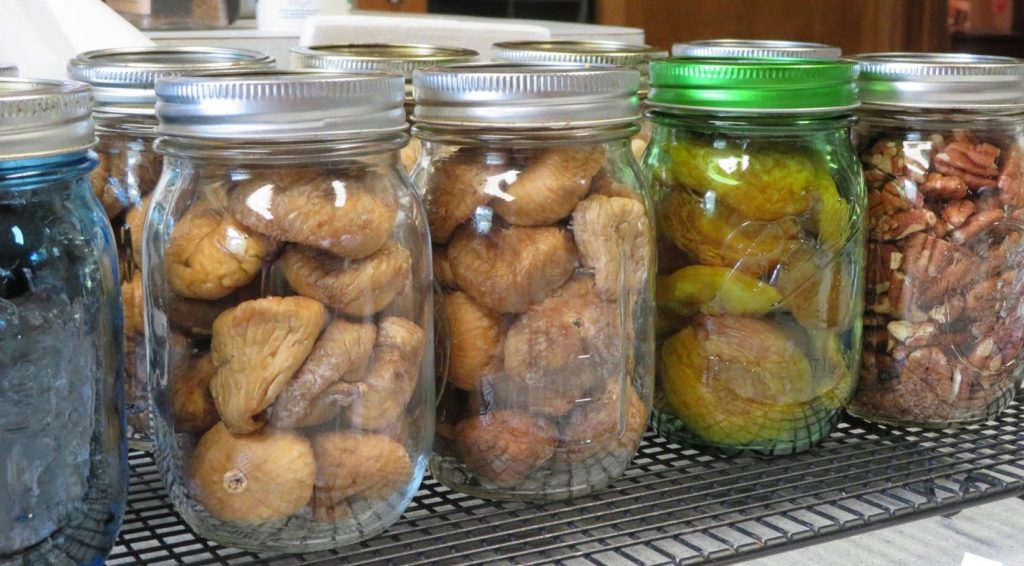PURPOSE: To lengthen shelf life, primarily of foods that cannot be dry packed with oxygen absorbers, by providing an airtight seal that prevents additional air and moisture from coming in contact with the food and prevents insects or molds from entering and contaminating the food being processed.
FOR: Home dehydrated foods
Dehydrated foods too moist for storage with oxygen absorbers
Foods having too much fat content to store with oxygen absorbers (e.g. nuts, cocoa, brown rice, sunflower seeds)
INSTRUCTIONS:
- Fill clean, dry canning jars with food.
- Place open jars in a preheated 200oF oven leaving an inch or two between the jars.
- Heat quarts 10 minutes; pints 5 minutes.
- Carefully remove hot jars from the oven.
- Put clean canning lids and rings on the jars tightly while they are still hot.
- Allow to cool.
- The lid will seal but a vacuum may not form in the jar so the lid may still push in when it is pressed. As long as the lid is sealed, the jar will be airtight. You can test it when completely cooled by taking off the ring and lightly flipping your thumb past the edge of the sealed lid.
- Store jars with the rings on them in a relatively cool, dark place.
To avoid browning of the food, leave a 1/2- to 1-inch headspace in the jars, do not heat above 200oF, and avoid leaving the jars in the oven longer than 10 minutes.
Lids may be reused for Dry Heat Processing if the lid is not bent and the sealing compound is still intact. However, do not reuse more than three or four times for best results.
Dry Heat Processing is not for long term storage (more than 5 years) because not all oxygen is removed. However, that is why it can be used for foods with more than 10% moisture content. The presence of oxygen will keep botulism producing bacteria from growing and producing the toxin. Also, Dry Heat Processing may not kill any possible insects in the food because of the short heating time.
Dry Heat Processing is NOT dry canning which heats jars at 220oF to 250oF for 30 to 120 minutes to kill insects. Dry canning is not a recommended method for food preservation. Food exposed to sterilizing heat for that length of time will be affected negatively. Beans will be hard to cook, wheat may not make good bread, vitamins will be destroyed, sugar can caramelize, and milk sugars will caramelize. Remember temperature affects nutrition, texture, appearance, smell, and taste.
Disclaimer: The Jardin Company, which produces Ball, Kerr, and Bernardin canning jars, makes their jars for wet heat processes and not dry heat processes. They will not guarantee that their jars will not break during this process. However, the temperature and processing times for dry heat processing are low enough to assure success 99% of the time.


